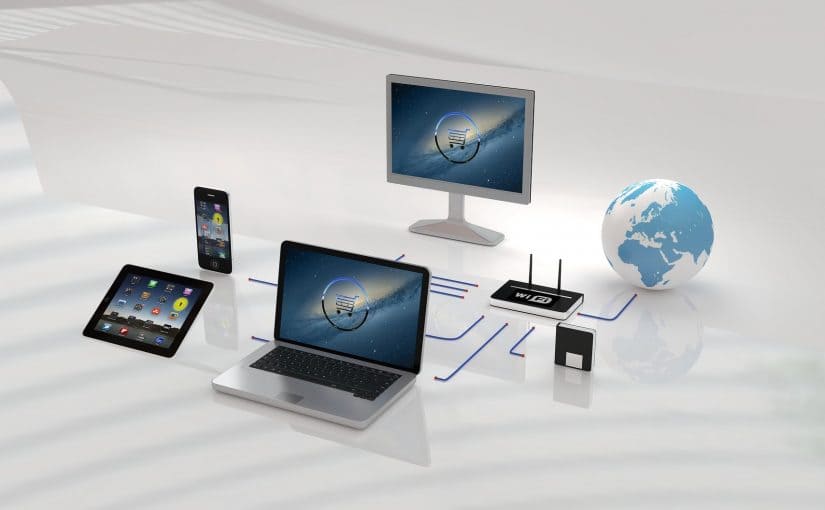The e-commerce industry continues to grow at an accelerated pace. The global e-commerce market is projected to reach $1.2 trillion by 2021. And the U.S. will continue to be its largest e-commerce market, accounting for nearly one-third of all retail e-commerce sales during that time period. This article explores the top E-commerce future trends driving landscape in 2022. Also, how digital transformation is accelerating those trends now and in the future. Read on to learn about key drivers impacting the online shopping experience in 2022, as well as advice from experts on how you can use these predictions to your advantage now to position your business for success in the years ahead.
e-Commerce Will Be Driven by AI
AI is also an E-commerce future trend. It has the potential to transform e-commerce in many ways. But one of the most important ways is that it can help companies increase their sales to an unprecedented degree. E-commerce sales continue to grow, but the rate of growth has been slowing. What AI can do is help e-commerce companies get better at converting their visitors into buyers. There are tons of ways AI can do this, but the most important one is personalized product recommendations.
If shoppers are given personalized product recommendations that they like, then they’re much more likely to buy. This is true even if the product recommendations are based on science that most people don’t even understand. The key is that they like what they see. E-commerce companies can also use AI to better understand their customers’ behavior, which will help them create better products, improve their service, and increase sales.
Consumers Will Be Hyper-Connected
The growing adoption of mobile devices and the Internet of Things (IoT) will result in consumers becoming hyper-connected. This will result in shoppers accessing information, comparing, and purchasing products through their mobile devices much more frequently. Volumes of e-commerce sales will be driven by this shift in consumer behavior as more and more people around the world gain access to the Internet, as well as cellular networks and the devices needed to connect to them. While the adoption of mobile devices and the Internet are projected to grow in all regions, there are some areas where this shift will occur more quickly than others. For example, Asia-Pacific is expected to see much faster adoption of these technologies than North America or Europe. This will drive volumes of e-commerce sales in Asia-Pacific faster than in other regions.
VR and AR Will Be an Integral Part of the Shopping Experience
VR and AR technologies have been around for a few years, but they’ve been primarily used for entertainment purposes. In the coming years, however, these technologies will be used for much more than just gaming. These technologies will allow shoppers to experience products in new and exciting ways. For example, VR could allow people to explore a virtual house, put on an Oculus Rift or similar device and walk through a virtual model of a house. Similarly, AR could allow people to place a product in their actual environment, perhaps holding up a smartphone with a special app open to see how the product looks on a shelf in their house. These technologies will allow customers to experience products in a way that was never before possible. They will be able to see products in their actual living or working environment and decide whether they’d like to buy them.
Robotics Automation Will Continue to Drive Efficiency
Robotics automation will play a larger role in the e-commerce industry because it will continue to drive efficiency. As e-commerce grows, the supply chains behind these businesses will need to grow as well. This is a challenge because the supply chains that retailers use are entirely manual and have no automation. Automation will help to drive efficiency in these supply chains by allowing retailers to determine how much product they need to stock at any given time, how much to ship to different stores, and when to get more product from the manufacturer when supplies run low. Automation will help to solve the industry’s supply chain inefficiency problem, and it will drive more e-commerce sales.
3D Printing Will Change How We Consume, Produce, and Market Goods
3D printing has been around for a while and been used primarily to create prototypes and parts for machines etc. Recently, however, 3D printing has seen a rise in the production of goods for everyday use. This technology will continue to change the way of producing and marketing the goods. For example, people will be able to order a unique customized shoes or a shirt exactly as they want. Instead of ordering a shirt in their size, they would be able to use a website to design the shirt. They would be able to use a website to order the shirt in their size, have it printed, and have it shipped to their house in a few days or weeks.
Conclusion
So, these are the top 5 E-commerce future trends that are essential to driving sales in 2022. Whether you are already having an eCommerce business or thinking of having one, you need to keep yourself updated with the latest trends in the industry.
